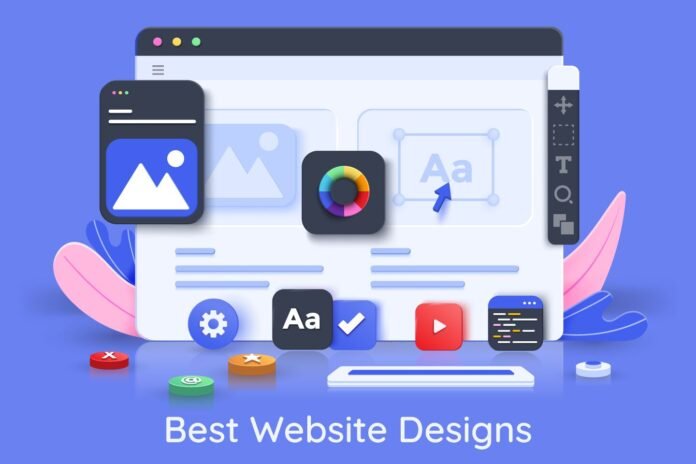A robust online presence isn’t a luxury; it’s a necessity. The allure of a compelling web design is undeniable. As web design continues to evolve, users on the hunt for the best blog experiences or those navigating commercial platforms expect pristine design combined with intuitive navigation.
It’s essential to understand what modern audiences, which range from bloggers to B2B professionals, truly desire: seamless integration, user-friendly interfaces, and of course, a captivating design. Whether you’re a beginner exploring web design for blogs, considering a redesign, or a professional delving into B2B website design, this guide offers invaluable insights.
Understanding the Essentials of Good Web Design
Ever visited a website and felt lost? Perhaps you were searching for design tips or wanted to explore website templates, but the convoluted navigation made the task daunting. A well-structured navigation transcends aesthetics. It delves into the realm of functionality, ensuring users can effortlessly hop from the homepage to a blog page or dive deep into case studies without feeling overwhelmed.
The design for your blog can shine or dim based on this essential principle. Whether it’s the typography used in the header or the color scheme that highlights the best blog posts, visual hierarchy ensures the user’s eyes follow a predetermined path.
From the fonts you choose to the color palette that defines your brand, consistency is pivotal. Imagine reading a post on the latest trends in design and being jarred by mismatched fonts or clashing colors. Not the best user experience, right?
Today’s user might discover your content on a desktop during a quick work break, skim through it on a mobile app during their commute, and then revisit it on a tablet at home. With the rise of web apps, mobile browsing, and varying screen sizes, adaptability is critical.
The Design Process: A Step-by-Step Guide
- Research and Inspiration – Dive deep, from studying design examples on sites like Webdesigner Depot and Creative Bloq to understanding user personas. Whether you’re crafting a lifestyle blog or browsing through Smashing Magazine can provide invaluable insights.
- Wireframing – This foundational stage lets you sketch your blog layout, offering a clear blueprint for the site. It’s the step where design elements start falling into place and where user-friendly paths are first envisioned.
- Prototyping – Transitioning from static sketches, you’ll be creating clickable models. These prototypes, made using various web design tools, allow stakeholders to interact and visualize the final product before it’s fully built.
- Final Design – Typography, color scheme, and homepage design are key. With the help of robust design tools and platforms like Photoshop, infuse vibrancy into your prototype. Additionally, selecting the right WordPress theme can elevate your design, making it more cohesive.
- Feedback and Revisions – Post-design, it’s time to refine. Using tools like CSS for design tweaks or even plugins for added functionality, every piece of feedback is an opportunity for growth. Iteration at this stage ensures your design not only looks great but also resonates with its intended audience.
Tools of the Trade
- Design Software – Adobe XD, Figma, and Sketch are just a few powerful tools available for web designers.
- Inspiration Sources – Beyond Awwwards, web design blogs like Webdesigner Depot and Design Shack can spark creativity.
- Collaboration Tools – Platforms like Zeplin and InVision ensure designers and developers speak the same language.
Understanding User Experience (UX) in Website Design
User Experience (UX) design is a discipline that sits at the crossroads of graphic design and functionality. It’s not just about making a website or an app look good; it’s about ensuring the overall feel of the interaction is intuitive and enjoyable for users. When executed well, UX design can set your website apart, making sure it’s not merely one of many, but a standout in terms of its user-friendliness.
Considering Your Buyer’s Persona – Before diving into the design process, it’s crucial to think of your target audience’s persona. Understanding their preferences, needs, and behaviors ensures that your design will resonate with them effectively.
Emphasizing on User Testing – Don’t just launch and hope for the best. Run tests with real users to get genuine feedback and identify areas of improvement. This ensures that your website not only looks appealing but also functions seamlessly, enhancing the overall user experience.
In Summary
When exploring consumer website designs or b2b website designs, you’ll discover often times less is more.
Looking through website templates or picking up design tips can give you great ideas. And remember, with the right tools, you can make websites that are not just nice to look at, but also easy for people to use. In the world of web design, it’s all about making things look good and work well.
















